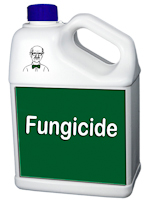 This is one of those late
season problems that really does no serious damage to
the tree. The spots do reduce the amount of surface area
on the leaf for intercepting light for
photosynthesis.
Also, in severe cases, leaves may drop prematurely from
the trees. However, since the impact comes in the fall,
the leaves have already done most of their job for the
year and the tree is only minimally impacted. So, from
the tree's point of view, no treatment is warranted.
This is one of those late
season problems that really does no serious damage to
the tree. The spots do reduce the amount of surface area
on the leaf for intercepting light for
photosynthesis.
Also, in severe cases, leaves may drop prematurely from
the trees. However, since the impact comes in the fall,
the leaves have already done most of their job for the
year and the tree is only minimally impacted. So, from
the tree's point of view, no treatment is warranted.
From an aesthetic point of view, however, you may have a
different opinion. If you are unfortunate enough to have
a susceptible maple in a key place in your landscape and
it routinely looks awful by the end of the summer, you
might consider treatment.
Fungicides are labeled for treatment of tar spot in
maple. The challenge in getting control is two fold. One
is in the timing of the application. Since fungicides
are primarily preventative in action, they must be on
the leaf when the fungal spores land. If they are
sprayed too late, they will not work and the timing of
the spore release by the tar spot fungi can vary
considerably. It depends on the temperature, moisture
relations and winds as to when a spray would be
effective.
Second, many of the trees
infected by this problem may be quite large. This means
that it will be expensive to spray them especially if
you need multiple applications to make sure you hit all
the spore releases.
So, since the plant
really does not suffer and fungicide sprays are
difficult to time properly and are expensive, it is
generally not recommended that you treat tar spot
disease.



